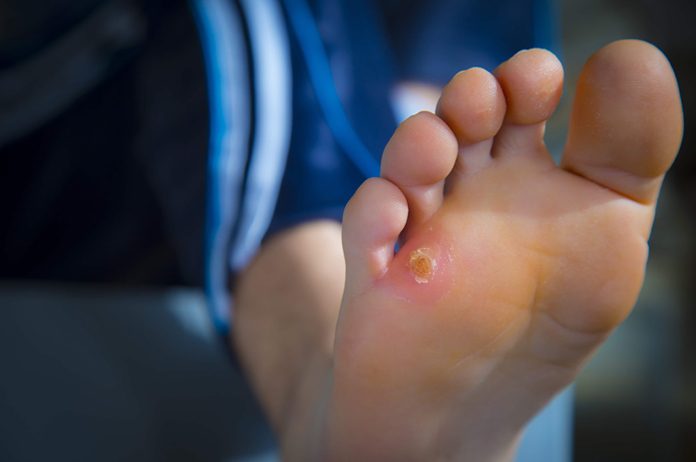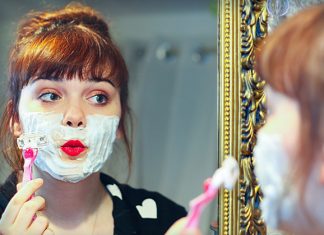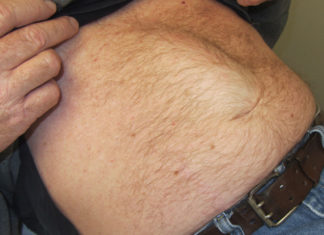If you are reading this article, you are thinking of how to get rid of corn. Corns and calluses cause a lot of discomfort and uneasiness. They are hard and thick layers of skin that show up on feet.
They are not necessarily dangerous but can be a big reason for irritation and suffering and ruin our feet’ appearance. Corn and callus are almost similar.
The difference is that corns are harder, smaller in size and more painful comparatively. They are mainly three kinds of corn and affect women more than men.
Among seed, soft and hard kind, the most usual ones are hard. Hard ones are tinier and consist of more concentrated layers of hard skin. Soft ones are grey or whitish and have a rubber texture, and generally appear between the toes. Seed corns appear on the bottom part of the feet and are also smaller in size.
The more the corn thickens, the more they become painful. Do not mistake corns for a disease. They occur due to constant friction or pressure on the skin. Corns generally heal easily, but they can really lead to painful circumstances and sometimes require treatment.
The following ways to get rid of corns on feet and toes will help you prevent them and maintain a healthy, good-looking foot.
How to Diagnose a Corn?
No specialized test is required to diagnose callus or corns. A normal and proper observation of your skin will let you know whether it has corns or not.
Corns are generally round and show up on the bottoms, sides, and tops of the feet. Corns may turn soar if left uncared. It can hurt if the corns are touched as the skin turns inflamed. The centre or the interior portion of corn can be either hard or soft and generally transparent in appearance. Medically, corn or calluses are two types of hyperkeratosis.
Ways to Prevent Corns
It would help if you eradicated the conditions that lead to the development of corns on feet so that it does not return even after treatment. These are the most important ways to evade the formation of corns on toes and feet.
- Wear properly fitting shoes and socks – It is essential to wear the right footwear with correct fit to protect your feet and enable easy movement. Choose your shoes according to your measurements that are neither very loose nor very tight. Your shoes should be able to fit in your feet even when they are swollen at the end of the day’s work.
- Size your toenails – Long toenails can be painful while fitting your feet in your shoes. This pressure can lead to the formation of corn on the toes.
- Get corn pads – Corn pads provide protection against the excess friction or pressure on the corn. Corn pads can be of various materials like felt, foam, and moleskin. They carry adhesive and helps to distribute the pressure on your feet in a uniform way. You should put them on positioning the corn at the center.
- Cleaning feet every day – you must wash your feet regularly with soap and foot scrub to maintain a soft foot.
- Use moisturizer – Use a foot cream or moisturizer daily to avoid your feet turning dry and rough. Moreover, it also helps to avoid friction.
Steps to Getting Rid of Corns
As mentioned earlier, corns and callus form due to intense friction and pressure on feet skin. Before you start to treat the poor conditions of your corn, you should evaluate the condition and cause of it.
Generally, they go away over time after the pressure or the frictions stops. When it goes out of your hand, it is best to take the advice of skin-related doctors and dermatologists.
- First, start with soaking your feet for ten minutes in warm water. This helps to soften the skin of your feet and also your corns.
- Rub a pumice stone on the corn after it has become softer. Pumice stone is ideal for removing dead skin, corns, and callus.
- Then again rub the pumice stone that was dipped in warm soapy water to file the affected areas of your feet. Gentle circular and sideways movement can easily help to eliminate the dead skin.
- Too much filing or rubbing your skin will peel of it more than necessary resulting in bleeding and infection later.
- After the dead skin is removed, apply the coat of moisturizer or cream with the content of salicylic acid that absorbs the keratin protein that forms the corns and dead skin cells. However, this type of cream is not for people who have diabetes, poor blood circulation, and too much sensitive or delicate skin.
- Purchase corn pads to protect the corns from contact your shoes.
Do not try to shave off or cut your corn all alone, as it can lead to bleeding and can be quite a pain. It is best to go to a doctor or professionals for this purpose. A proper pedicure from time to time will keep the skin of your feet healthy and clean. Moreover, this will never allow the growth of corns on feet.
Doctor’s Help
Proper feet treatment will help in the quick recovery of the corns. Plus, it does not require any medical aid at the initial level.
However, if it starts to grow increasingly and becomes painful over time, you should seek the help of a dermatologist. Also, if you have frail or fragile skin, arterial disease or diabetes, you should consult a doctor.
Corns can seem dangerous if they gradually turn bigger, harder and show warning signs like augmented pain, pus, redness, and swelling or skin damage. If you follow the ways mentioned above to prevent and get rid of corn, you can avoid many problems otherwise.
Corns on feet and toes are a noncancerous growth and can be managed at home or with a mere treatment that does not require any elaborate surgery.






